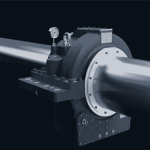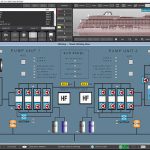Ships come in various descriptions and have hundreds of thousands of components, but there are a few parts that are common to all ships. In this guide, you can learn about how the basic parts of ships have evolved over the centuries.
● Evolution of Ships over Time
● From floating vessels made of wood to ultra-modern cruise ships, the evolution in design and architecture of ships have come a long way. However there are a few parts that are and will always be common to ships (or rather sailboats or floating vessels) from those that were built 4000 years ago to the newest cruise ships that are nothing less than floating cities.
Parts of Ships Common to All Ships
Body of the Ship or The Hull:
The hull of a ship is responsible for the floatation property of the ship. Generally ships are single hulled (monohull design). It’s only other vessels like catamarans (two hulls) and trimarans (three hulls) that have more than one hull to keep it afloat. It is the hull that houses the engines that to which the propellers are attached. Hulls have to be desingned very meticulously because they are always subjected to stress and strains and the failure of the hull will lead to diasastrous results.
Propulsion System:
The propulsion system powers the ship and moves it in the desired direction. Back before engines were introduced in ships, sails and oars were used to direct the ship. Depending on the type of the ship and the age to which it belonged to, the propulsion system consists of at least one of the following: sails, oars, steam engines, paddle wheels, diesel engines, nuclear powered engines, and propellers. For steering the ship, once again, depending on the type of ship, the angle of the sails, rudders, or the propellers are changed.
Communication and Navigation Equipment:
Getting lost at sea can be sooner and easier that you anticipate. A few miles into the sea and chances are high that you have no idea which side is north. The greatest explorers made the greatest discoveries way back when there was no onboard radio, telephones, computers and RADAR systems. How did they do it? They use a very simple equipment called a compass and knew the art of looking at the stars and learning which direction they were sailing in. Things have changed a lot, and the modern day ships have highly sensitive equipment that take care of the ship’s navigation right from the boarding point to the destination.
Various Other Parts of a Modern Ship
Apart from the major parts of the ships that we read about in the above section, there are a few equipment itmes present in almost all modern day ships. Theseare the safety systems, anchors (anchors were present in olden day ships, too), electrical equipment, cranes, etc.
Anchors:
Anchors are used to hold the ship in one place and prevent it from being carried away by waves. They look like hooks and are huge and heavy, connected by huge iron chains. They are dropped from the ship when the ship has to be docked or kept in one place.
Electrical Systems:
Modern ships use a lot of electricity to maintain ithe cargo at the required temperature. Also, in the case of passenger ships, a lot of electricity goes into satisfying the needs of the passengers. Thus modern day ships are not only concerned in going from point A to point B, but a whole lot of other things, too.
Safety Equipment:
A large number of rules and regulations concerned with safety come into play when a modern day ship is built. Due to these precautionary measures, we have seen the number of fatalities related to ships dwindle. Even if the ship is damaged beyond repair, it is made sure that the passengers and the crew members of the ship remain safe until help arrives.


